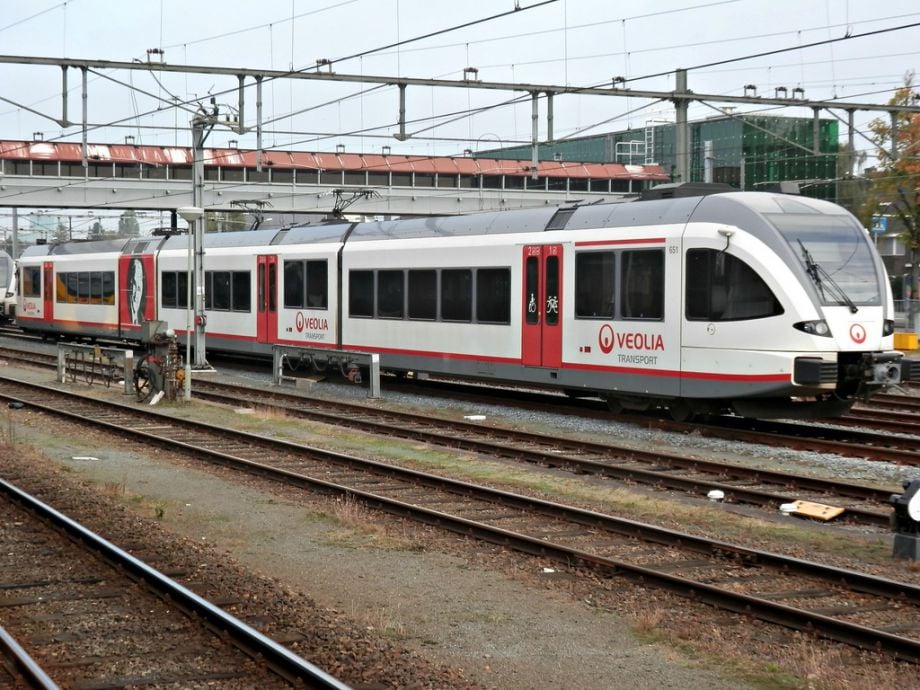Long Barred from American Tracks, European Train Designs Could Get Rolling by 2015
By
Stephen J. Smith | October 31, 2013
Credit:
Trevor on Flickr
For decades, the Federal Railroad Administration had effectively banned modern European trains from American mainline rail networks. European and Asian manufacturers have been slimming down their rolling stock for years to improve performance — energy efficiency, braking and acceleration, even track and train maintenance — while U.S. transit agencies were stuck with bulked-up versions of sleek European cars, weighted down and otherwise modified to meet FRA regulations.
Related Stories
The Acela, on Amtrak’s Northeast Corridor, was perhaps the most notorious victim of the old rules. David Gunn
once called it a “high-velocity bank vault” for its bulky design, and many attributed its maintenance woes to its untested design, customized to meet U.S. safety regulations. But every commuter and intercity train has to comply with the rules, and most suffer, to one degree or another, from
high costs and poor performance.
But not for much longer. Beginning in 2015, regulators and manufacturers expect the FRA to allow modern European designs on tracks throughout the country, running side by side with heavy freight at all times of day. There will be no special signaling requirements for trains purchased under the new rules, although a separate requirement for more advancing anti-collision signaling, called positive train control, is set to kick in around the same time.
Crash safety reform has been slowly building at the FRA for more than a decade, and until now modern European designs were only available to agencies that could endure an onerous waiver process, and only if they could keep other trains off the tracks during service hours. Transit agencies could apply to the FRA for an exemption, but they had to submit detailed engineering analyses and could not run freight or so-called “non-compliant passenger trains” — that is, lightweight European and Asian models, more like subway and light rail cars than bulky intercity equipment — at the same time. Railroads in Europe and Asia are not subject to conditions like these.
“It’ll take a while to get the [new] regulations in place,” said Robert Lauby, associate administrator for railroad safety and chief safety officer at the FRA. The new rules have already been drafted and now await approval from various federal agencies, followed by a period of public review. Many in the industry don’t expect significant revisions to what the FRA’s safety committee has already drafted, and Lauby suggested that the new rules should clear the final hurdles sometime in 2015.
The new rules have flown somewhat under the radar, with even experts specializing in commingled freight and passenger operation doubting how complete the reform will be. “I’m not shocked [to hear of the new rules],” said one university researcher, “but I don’t totally believe that you would see it by 2015.”
Alois Starlinger, head of structural analysis, testing and certification at Swiss rail car manufacturer Stadler, was more optimistic. The new rules, he said, would allow agencies to purchase equipment that’s nearly off the shelf, with only small modifications. (Starlinger was deeply involved with the engineering task force that wrote the new rules.)
Stadler will likely have a first-mover advantage under the new rules, as the company has worked out what slight differences will remain between the new American standards and European ones. It has already sold rail cars to a number of systems under the current waiver process, including to the Denton County Transportation Authority’s A-train, outside Dallas. Additionally, Stadler hopes to sell trains under the new rules, which wouldn’t require a waiver, to another upcoming rail system in the Metroplex — the Cotton Belt Rail Line, which will provide service between Dallas’ northeastern suburbs and Southwest Fort Worth, via the Dallas/Fort Worth International Airport.
The rule change is the result of a confluence of factors. The FRA has edged toward reform since at least the early 2000s with its waiver process, and some have suggested that the Obama administration’s push for high-speed rail — true high-speed service, not the “higher-speed” Acela variant — helped move things along.
Even the researcher skeptical of the depth of the new changes noted a generational shift in attitudes at the FRA. “The administration has changed a great deal,” she said. “Some of the people who were diehards opposed to [reform] have retired, and we’re certainly seeing a new generation.”
“The will of the FRA, and especially Bob Lauby, to allow for alternative compliance has been a great development,” Starlinger said. “Before that, all foreign designs were completely blocked. But we’ve gained a lot of experience with this type of safe operation in Europe over the last 30 years.”
“The old requirements — the conservative FRA approach — go back to the 1920s,” he said. “It’s a very old code. We think it’s time to introduce something more sophisticated.”
The Works is made possible with the support of the
Surdna Foundation.
Stephen J. Smith is a reporter based in New York. He has written about transportation, infrastructure and real estate for a variety of publications including New York Yimby, where he is currently an editor, Next City, City Lab and the New York Observer.





